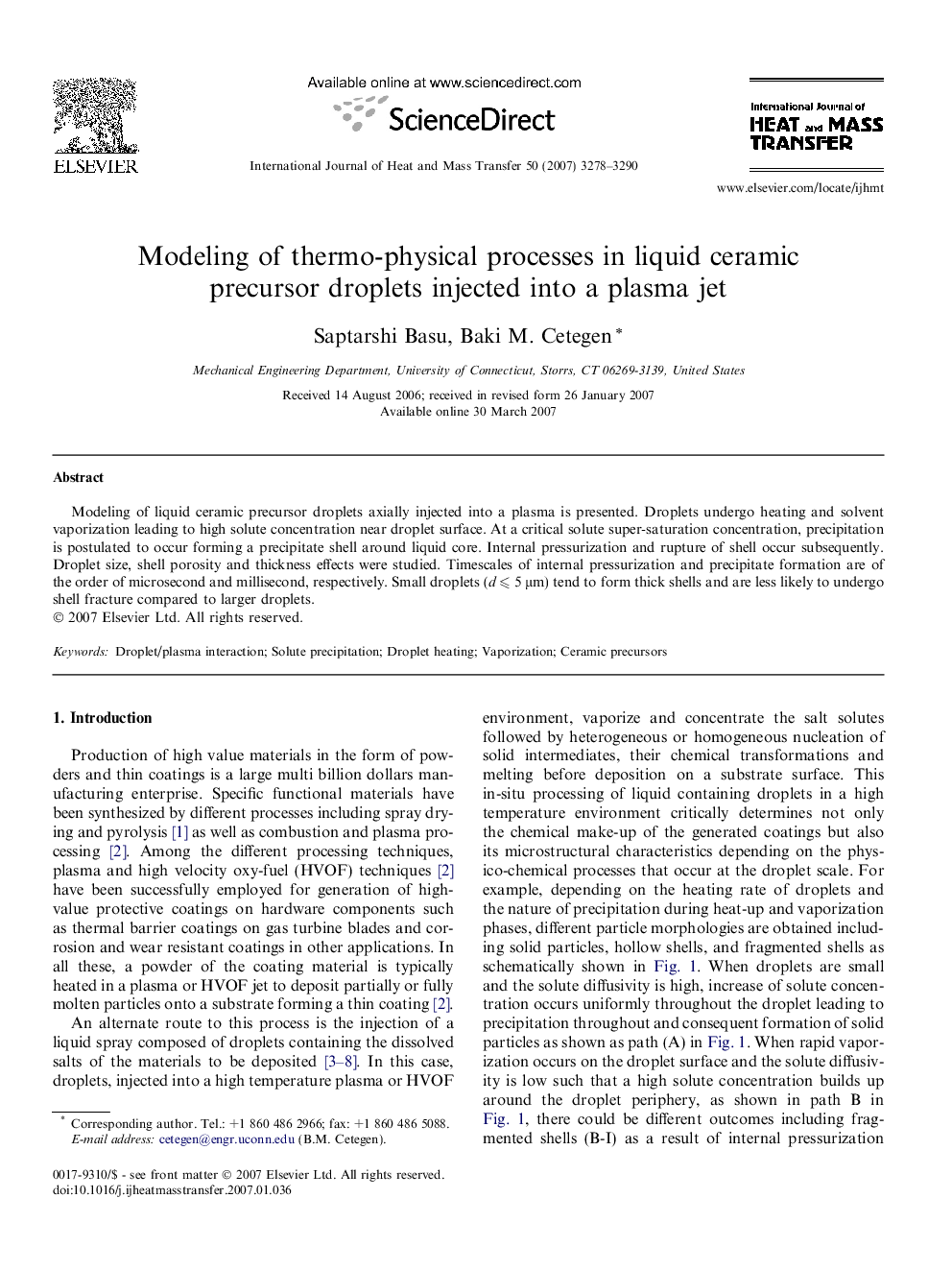| Article ID | Journal | Published Year | Pages | File Type |
|---|---|---|---|---|
| 661253 | International Journal of Heat and Mass Transfer | 2007 | 13 Pages |
Abstract
Modeling of liquid ceramic precursor droplets axially injected into a plasma is presented. Droplets undergo heating and solvent vaporization leading to high solute concentration near droplet surface. At a critical solute super-saturation concentration, precipitation is postulated to occur forming a precipitate shell around liquid core. Internal pressurization and rupture of shell occur subsequently. Droplet size, shell porosity and thickness effects were studied. Timescales of internal pressurization and precipitate formation are of the order of microsecond and millisecond, respectively. Small droplets (d ⩽ 5 μm) tend to form thick shells and are less likely to undergo shell fracture compared to larger droplets.
Keywords
Related Topics
Physical Sciences and Engineering
Chemical Engineering
Fluid Flow and Transfer Processes
Authors
Saptarshi Basu, Baki M. Cetegen,
